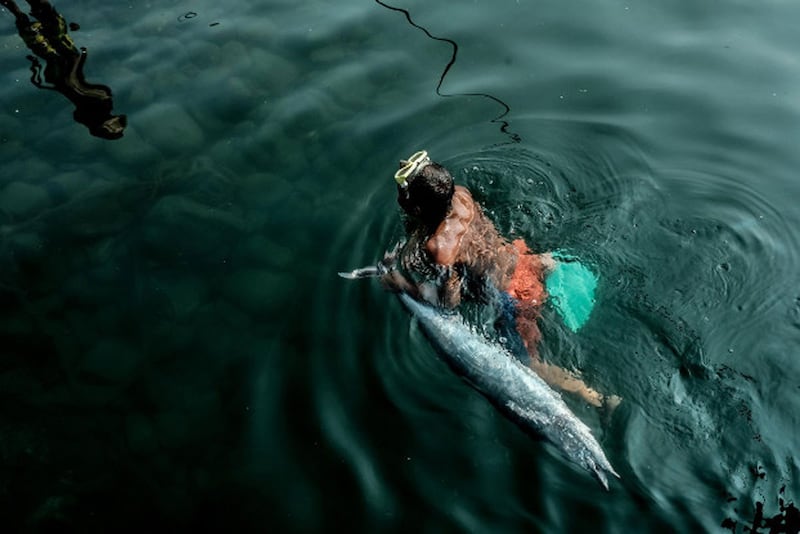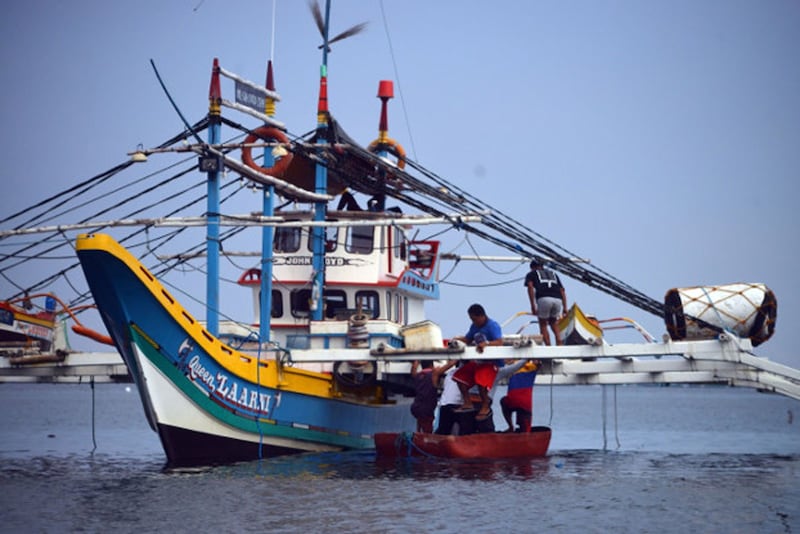Restrictions in Philippine territorial waters and the open seas, along with threats from large-scale fishing operations, are the biggest issues facing subsistence fishermen in this archipelagic country of 7,100 islands, according to an organization representing them.
In recent years, governments of coastal municipalities have begun restricting their “municipal fishing grounds,” or waters up to 15 km (9 miles) from the shore, allowing only resident fishermen who register with local authorities, said Fernando Hicap, chairman of Pamalakaya, a Philippine fishermen’s organization.
“Imagine, you’re a Filipino fisherman, you’re in the Philippines, and you’re on municipal fishing grounds, but you’re sued for illegal entry. How hurtful is that? Isn’t that wrong?” Hicap told BenarNews, an RFA-affiliated online news service.
“What misery. Add to that this [COVID-19] pandemic – no one’s buying what little catch they bring home because of the lockdowns,” said Hicap, adding that fishermen have little choice but to consume their own catch, or barter them for other small goods.
Municipalities are allowing outsiders to pay an annual fee, usually not lower than 1,000 pesos (U.S. $20) – a fee that subsistence fishermen, who use small-scale, low-technology practices, cannot afford to pay – according to Hicap’s group. Besides, it’s not feasible to register and pay fees at every coastal municipality to be able to fish in waters that have traditionally been communal to Filipinos.
Restrictions were not an issue in past decades when there were more fish in the shallows, said Benjamin Sumaganday, a fisherman in northern Masinloc town.
“There used to be huge catches in the past. But the population grew over the years, and we can’t afford to just stay in municipal waters,” the father of four told BenarNews.
Meanwhile on June 5, the world will mark the fourth International Day for the Fight against Illegal, Unreported and Unregulated Fishing (IUU).
According to the Food and Agriculture Organization, a United Nations agency, “IUU fishing includes many types of illicit activities, for example, fishing without a license or authorization, not reporting or misreporting catches, fishing in prohibited areas and catching or selling prohibited species, or fishing in areas not covered by a regulatory framework.”
The Philippines Bureau of Fisheries and Aquatic Resources (BFAR) has vowed to protect locals against such activities.
Calling on Filipinos to focus their fishing efforts in the West Philippine Sea – a region of the South China Sea that the Philippines claims as its territory – the government agency promised to boost patrols against illegal fishing put local fishers at a disadvantage.
“[W]e remain committed in our mandate to address IUU fishing in Philippine waters,” the bureau said in a news release earlier this year.

Municipal action questioned
Even as municipal governments cite conservation as the reason for restricting fishing access to their waters, Hicap said those in power could be benefiting – otherwise, they would not let in commercial trawlers.
“Small-time fishermen are not the reason there is depletion in municipal waters. The cause of that depletion is the commercial vessels who freely exploit those waters,” Hicap said.
Anna Oposa, head of the advocacy group Save Philippine Seas, said enforcement must be stricter and commercial fishing must be prohibited.
“Our fisherfolk are already some of the poorest, most marginalized groups in the country working hard to feed the country and the rest of the world. There can be no positive outcome for the Filipino people if we allow commercial fishing activities where they shouldn’t be allowed,” Oposa said.
Sumaganday, 52, said many fishermen in his community have joined fishing fleets to be able to fish farther out at sea even as territorial tensions pit Filipinos against foreign fishing fleets, specifically from China.
“Most of the time it is not hostile, but there are times that we are being shooed away from territories that are traditionally ours,” the fisherman from Masinloc said.
Chinese encroachment
In March, government security officials reported the presence of about 200 Chinese trawlers at Whitsun Reef in the Philippine exclusive economic zone (EEZ) and elsewhere in the contested South China Sea. The officials said the trawlers were crewed by maritime militias, but Beijing has denied the accusation and insisted the waters were within Chinese territory.
Manila has been filing daily diplomatic protests with Beijing since April, demanding it remove the ships. In addition, the Philippine navy, coast guard, and fisheries bureau have deployed more ships to Scarborough Shoal and the Spratly Islands to try to drive out or at least challenge the Chinese trawlers.
Since Beijing took control of Mischief Reef in the Philippine EEZ in 1995, the presence of Chinese ships has increased steadily in the South China Sea. In 2012, China and the Philippines were involved in a months-long standoff at Scarborough Shoal.
Four years later, in 2016, an international arbitral court ruled in favor of Manila’s territorial claims in the maritime region, but that has not slowed Beijing’s expansionist activities in the sea.
Hicap’s group, Pamalakaya, recently petitioned the U.N. to nullify Beijing’s new coast guard law, investigate the environmental damage Chinese ships have caused in the South China Sea, and “demilitarize” the strategic and resource-rich waterway.
The law, which took effect in February, allows its ships to use weapons against any vessels found in waters that Beijing claims as its territory.
Philippine authorities who lack maritime assets have been hard pressed to catch poachers, including foreign ones from China and Vietnam.
“There’s been significant damage to marine life in municipal waters. The numbers vary in different studies, but it’s been estimated that 60 percent to 75 percent of the Philippines’ fishing grounds are overfished,” Oposa told BenarNews. “There’s also a significant decline in coral reef health and cover, which is alarming because coral reefs are habitats of fishes.”
An organization of fishermen who used to fish freely at the Scarborough Shoal said their catch – and income – had declined by as much as 80 percent.
“We used to be able to go there, but not anymore,” Sumaganday said.
“Now are we are forced to fish elsewhere,” he said, adding that the shoal, in bygone days, was the source for a bountiful catch.

Fishing industry numbers
Subsistence fishermen make up the largest sector of the Philippines’ fishing industry, according to the most recent data from BFAR.
Of the 1.9 million fishermen registered with BFAR, more than 927,000 do small-scale “capture fishing,” while more than 239,000 do “gleaning” or fishing with basic gear in shallow water. Paddle boats accounted for about 68 percent of registered vessels.
Meanwhile, much of government support for the industry goes into aquaculture – raising fish in ponds, nets or cages in natural or artificial bodies of water – which employs about 209,000, according to official statistics.
Most fishermen live hand-to-mouth and have few options to professionalize their livelihood including acquiring larger, more dependable boats and equipment. As Chinese and Vietnamese fishermen sport metal or wood-and-metal trawlers, many Filipinos use traditional-type wooden outriggers.
Hicap worries that as the Philippine Congress moves to amend the constitution to allow full foreign ownership of businesses in the country, Filipino fishermen, especially the poor, will sink even farther down the government’s list of priorities.
“The government should ensure municipal fishing grounds remain communal. They should be limited to subsistence fishers, with no commercial vessels,” he said.
Reported by BenarNews, an RFA-affiliated online news service.

